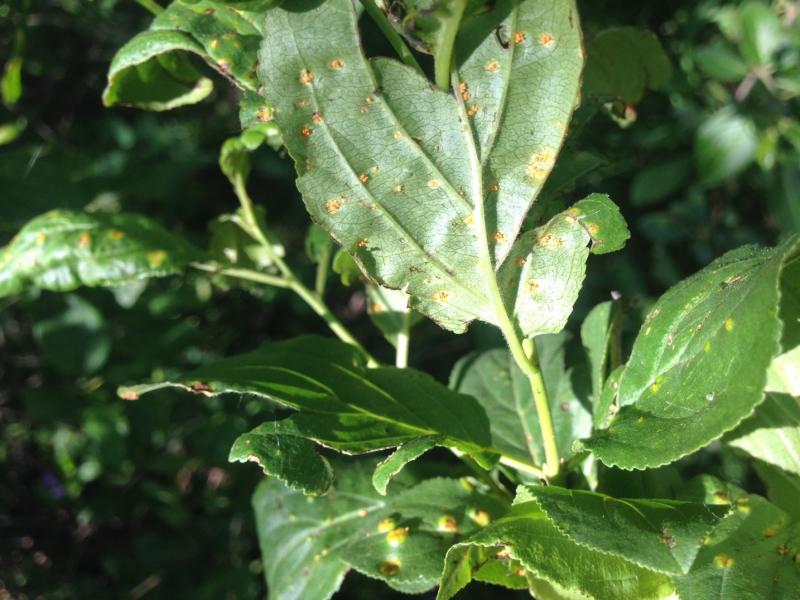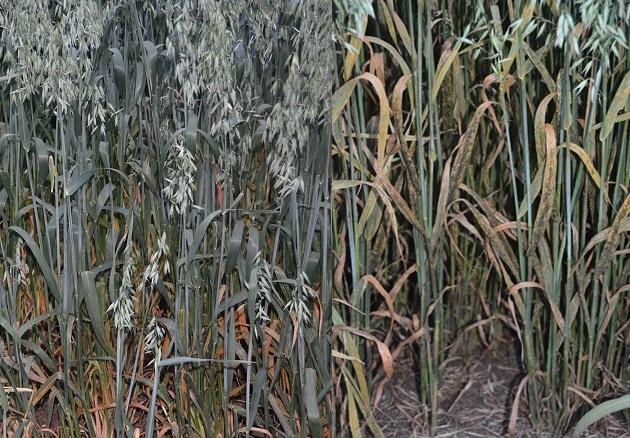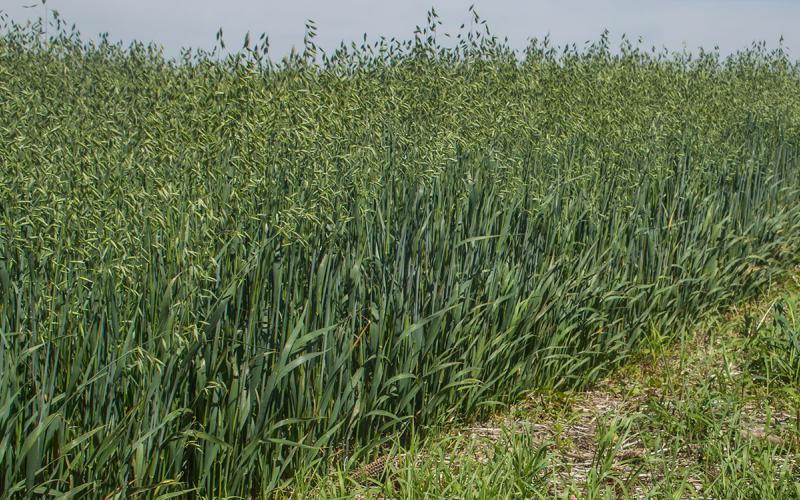Originally written with contributions by Emmanuel Byamukama, former SDSU Extension Plant Pathologist.
Crown rust infects oats, and its alternate host, buckthorn (Rhamnus spp.), was found with heavy crown rust spores throughout South Dakota. If you are growing oats this year for grain, be sure to scout and plan a fungicide application to protect the oats from crown rust.
Causes

Crown rust of oats is caused by the fungus Puccinia coronata var. avenae. Unlike stripe, stem, and leaf rust which must blow up from the southern states (because they are unable to overwinter here), crown rust overwinters in South Dakota on buckthorn (Figure 1). Crown rust typically appears on buckthorn three to four weeks before infection is observed on oats. The fungus which causes crown rust in oats is specific to cultivated oats, wild oats, and a few other grasses. Crown rust does not infect wheat, barley, or rye. Wet, warm, and cloudy weather and long dew periods promote crown rust infection. Hot and dry weather halts crown rust development.
Symptoms
Crown rust symptoms include small oval-to-oblong shaped, bright orange-yellow pustules which are often observed on the leaves but may also be seen on the leaf sheaths, panicles and stems.
Prevention
To prevent crown rust from developing on oats, a fungicide application is required. The ideal time for fungicide application is from early flag leaf emergence to flag leaf fully emerged. Because of the heavy inoculum of crown rust on buckthorn, scouting and planning a fungicide application is recommended. If crown rust pustules can be seen on lower leaves at flag leaf emergence, a fungicide treatment is recommended. Several fungicides on market are effective against crown rust.
Management

Crown rust can be managed through:
- Growing resistant cultivars. Some cultivars have good resistance or have tolerance to crown rust (Figure 2).
- Planting oats early in spring, this may help plants escape infection, which typically happens to late plant spring oats.
- If possible and practical, uproot/destroy any buckthorns in the nearby area. Eradicating local source of inoculum may help delay infection keeping in mind that crown rust spores may travel (be blown) from long distances.

